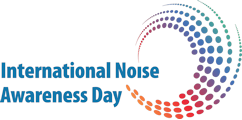tips on filing a noise complaint
Noise is a serious environmental and health hazard. Exposure to loud noise is one of the leading causes of hearing loss in the 38 million people with impaired hearing in the United States. Studies also correlate noise with a range of health problems including changes in sleep, digestion and blood pressure. Noise is also a leading quality of life complaint in many communities across the country. For example, in Los Angeles, the impact of the noise from leaf blowers has received national attention. And, noise was the leading complaint in New York City’s Quality of Life Hot-Line with close to 70% of the calls related to noise.
The Noise Center receives complaints about noise from individuals and communities from around the world. Sources of noise which bother people include (but are not limited to):
- aircraft
- loud neighbors
- traffic
- leaf blowers and other lawn equipment
- loud music, “boom cars”
- sirens, car alarms, horn honking, and
- barking dogs and other animals, jet skis, snowmobiles.
go to the source
When possible, resolve the noise problem amicably. Discuss the situation with the noise maker, providing literature on the impacts of noise to support your claim. Find others nearby who may share your concerns. This will make your case stronger.
Some examples of dangerously loud recreational activities
- Noise levels at video arcades can be as high as 110 dBA.
- Firecrackers create sound levels from 125 – 155 dBA at an average distance of 10 feet.
- Sound levels at live music concerts can be measured at 120 dBA and beyond.
- The noise level of gunshots can be measured at 150 dBA -167 dBA and hearing loss can result from just a few shots of a high powered gun, if appropriate hearing protection is not worn.
- Noise levels at movie theaters have been measured up to 118 dBA.
- Sound levels in health clubs and aerobic studios can be as high as 120 dBA.
- Personal stereo systems with headphones produce sounds as loud as 105 – 120 dBA if turned up to maximum levels.
- Sound levels at a sporting event can be measured up to 127 dBA.
- Motorboats emit sound levels ranging from 85 – 115 dBA.
- Motorcycles have been measured at levels ranging from 95 – 120 dBA.
- Noise levels of snowmobiles are as high as 99 dBA.
- Many children’s toys emit sounds which are measured at 135 dBA -150 dBA.
what to do
Recognize that loud recreational activities not only pose a risk to hearing, but also can impact on your neighbor’s right to peace and quiet. Whenever possible, turn down the volume or ask the offender to do so. Limit exposure time to noisy activities and wear adequate hearing protection even if you think you are having fun. A rule of thumb: If you have to shout in order to be heard three feet away, then the noise is probably too loud and could be damaging to your hearing. In these instances, use hearing protection.
documents the problem
Include the noise source, time, date and duration of the problem. It may also be helpful to have a sound level meter to measure the decibel level of the noise. Remember, though, that accurate readings which will “hold up in court” require sensitive equipment with a person specifically trained in noise measurement).
try meditations
If, after presenting your noise problem, you are not satisfied, consider mediation.
Contact authorities
Contact your local Police Department, Department of Environmental Protection, City Council, Mayor’s Office. Analyze your local community noise code to determine if a violation has occurred. Present ideas for revisions in the noise code if needed.
organize your own anti-noise group
In some cases, you will get best results if you create your own anti-noise organization. As a group, you may have more power in resolving the noise problem.
Remember, pay attention to the noise you make. Respect another person’s right to peace and quiet and turn down the volume in your own activities.
